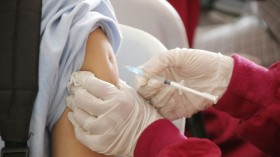By September, Cassini, the spacecraft observing Saturn will plunge to its death. Part of its grand finale mission is to dive 22 times in between Saturn's rings to collect valuable data.
Last April 22, Cassini started its "death dives" and plunged between Saturn's rings -- the first of 22 that it has to perform to complete the mission.
"In the grandest tradition of exploration, NASA's Cassini spacecraft has once again blazed a trail, showing us new wonders and demonstrating where our curiosity can take us if we dare," Jim Green, director of the Planetary Science Division at NASA Headquarters in Washington, said in a press release.
The dive was performed in between rings, a region considered "danger zone". Along with the first of 22 dives, Cassini also completed its 127th and its final flyby to Saturn's moon titan.
⚡️ “#GrandFinale: Into the Gap!”https://t.co/4HAbkYVDeY
— CassiniSaturn (@CassiniSaturn) April 27, 2017
"This spectacular ending, the Grand Finale, going out in a blaze of glory, is a phenomenal conclusion to a chapter in humankind's exploration of the planets," Earl Maize, the Cassini project manager at NASA's Jet Propulsion Laboratory said in a statement. "Just a chapter, the book is not complete, there's more to come. But this has been a marvelous ride."
The farewell flyby to Titan helped Cassini increase its velocity, thanks to Titan's gravity. The flyby also helped Cassini change its trajectory in order to perform dives into the danger zones, between Saturn's rings for its Grand Finale mission.
During the first dive in between Saturn's rings, the spacecraft is flying 76,000 miles per hour fast enough to fly from Los Angeles to New York in a less than two minutes. The speed also increased the risk involved with the mission. With the trajectory and the rate Cassini is moving, any debris will pose a threat to the spacecraft. In order to protect itself, the spacecraft performed the dive with its large dish antenna facing forward, acting as a shield protecting the instruments aboard.
With just one dive, scientists have already gathered useful data and the succeeding 21 more dives will surely provide more vital information about the planet.
© 2024 NatureWorldNews.com All rights reserved. Do not reproduce without permission.





